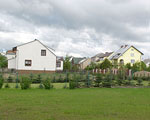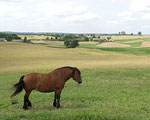|

Click to enlarge



|
LANDSCAPE PROTECTION
Historically formed, the landscape by Lake Wigry has in many places retained its high aesthetic value. Not only is it beautiful, but also is characterized
by a high natural value. The mosaic of the forests, lakes, meadows, cultivated lands and hedges in the open, undulating area is an endangered value which
has to be protected by the National Park.
Among many dangers for the landscape, its urbanization, i.e. the development of the areas so far occupied by fields, meadows and pastures, comes to the
fore. Year in, year out, the area of the Park is being "overgrown" with approximately 30 new buildings, including new rural habitats, farm buildings and
residential buildings. Apart from the buildings erected in places intended for it, attempts are also undertaken to evade the law in effect and to
lay out new buildings outside the building lands.
Apart from the number of buildings, which are gradually filling the Park, other very important issues are: their form, their height and their location . As buildings constitute a permanent element of land, every decision granting rights for erecting a new building and, in practice, entailing
an irreversible change of aesthetic and natural values requires a great deal of prudence. If new buildings have to be laid out, they should become an
integral part of the landscape and to the greatest degree refer to the traditional architectonic forms of the region.
The appearance of the landscape by Lake Wigry will be conditional upon two factors; namely legal regulations and decisions of local government authorities
issued on the basis of these regulations. Developed for certain villages, land management plans for some time have put affairs related to the urbanization
of these areas in order, indicating the borders of the building lands and determining the architectural form of the new buildings. The protection of the
landscape, so important for the National Park, will now depend on the determination of local government authorities in achieving a common goal - the
sustainable development of the region.
|